June 14, 2025 | 00:32 GMT +7
June 14, 2025 | 00:32 GMT +7
Hotline: 0913.378.918
June 14, 2025 | 00:32 GMT +7
Hotline: 0913.378.918
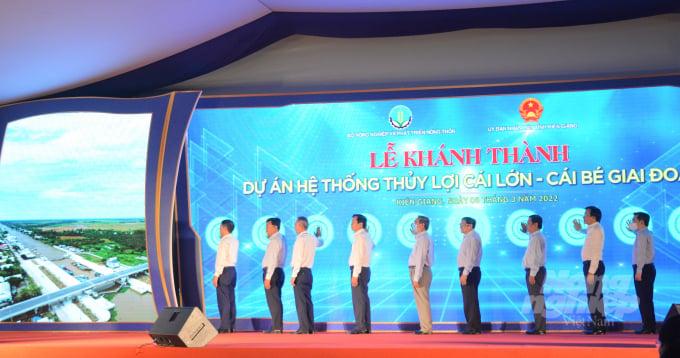
The Prime Minister and delegates pressed the button to inaugurate the Cai Lon - Cai Be irrigation system on March 5. Photo: Trung Chanh.
The Cai Lon - Cai Be irrigation system Project was formed as a result of decades of studies of many agencies, experts and scientists from state and ministerial-level research and planning projects to consultation gathering for the research and projects.
Investment preparation work started in 2009, and it took another eight years for the investment project to be fully established. The investment policy of Cai Lon - Cai Be irrigation system Project - Phase I was approved by the Prime Minister in Decision No. 498/QD-TTg dated April 17, 2017.
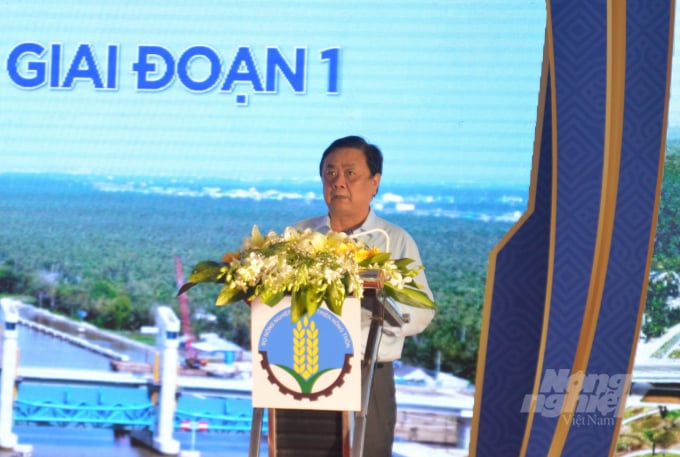
Minister of Agriculture and Rural Development Le Minh Hoan making a speech. Photo: Trung Chanh.
Cai Lon - Cai Be irrigation system Project - Phase I is a large project which requires particularly complex techniques but promises a wide range of benefits and impacts. Its missions include:
- Controlling water sources (salt, brackish, fresh); creating stable and sustainable conditions for production models in line with ecosystems (fresh water, salt - brackish water, fresh - brackish water alternately) for the beneficiary area (384,120 ha comprising the provinces of Kien Giang, Hau Giang, Ca Mau, Bac Lieu, of which the land for agricultural and fishery production is 346,241 ha).
- Combining the West Sea dyke to form a cluster of works that actively respond to climate change, sea level rise associated with natural disaster prevention and control as well as flooding reduction when the ground is lowered (due to land subsidence); reducing damage in the region’s production models caused by natural disasters especially in the dry season.
- Contributing to the supply of fresh water in the rainy season for salt - fresh water production areas of An Minh and An Bien districts during the years of little rain; helping drainage for beneficiary areas in the context of climate change and sea level rise; combining the development of terrestrial transport infrastructure to create conditions to promote socio-economic development in the region.
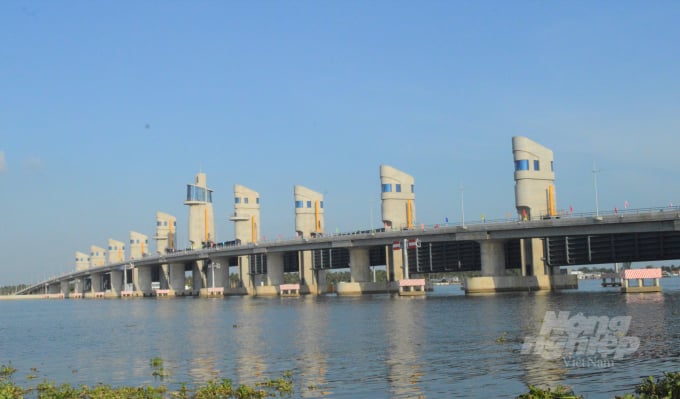
Cai Lon sluice was completed ahead of schedule. The inauguration and then usage soon demonstrated the efficiency of investment in this project. Photo: Trung Chanh.
After a long time of implementing the project, Cai Lon - Cai Be irrigation system has been completed and achieved a number of important meanings and purposes:
Firstly, there has been a change in the mindset and awareness of people for irrigation activities in the coastal area of the Mekong Delta from "preventing salinity" to "controlling all water resources".
Secondly, the will of “following along nature” in agriculture is described as "controlled adaptation", in which irrigation works play the key important role.
Thirdly, this is proof that Vietnamese people can design, construct and manage the world's leading complex and grand irrigation works.
Fourthly, “Consensus, will, and determination bring success.” The project would not have achieved such impressive results without the high consensus of the people (nearly 300 households accepted the early handover, more than 100 households donated land for the construction site); the progressive attitude in receiving ideas and frank criticism; as well as companion and support of media agencies; close attention and direction of leaders at all levels.
This is a large project, with particularly complicated techniques. Normally a project of this scale might take up to 4 years, but in fact the whole implementation process of Cai Lon - Cai Be irrigation system Project took only over 2 years and even amidst the outbreak of the Covid-19 pandemic.
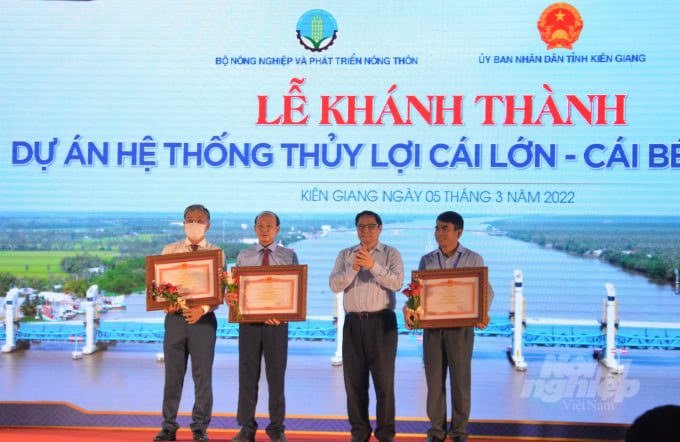
Prime Minister Pham Minh Chinh presents certificates of merit to units that have had great achievements in the implementation of the Cai Lon - Cai Be irrigation system Project. Photo: Trung Chanh.
Speaking at the ceremony, Prime Minister Pham Minh Chinh said, “The Cai Lon - Cai Be project is a work of "the will of the Party, the heart of the people", an intellectual work of our Vietamese people. Under circumstances of extreme difficulty, we have affirmed our stance and strived for the goal of fast and sustainable development.”
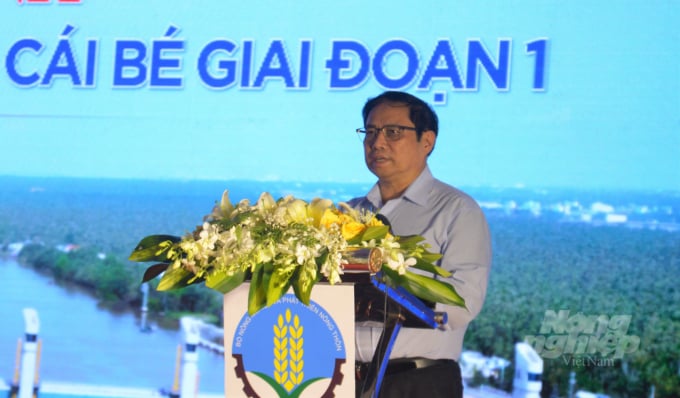
Prime Minister Pham Minh Chinh. Photo: Trung Chanh.
The Mekong Delta is a unique area with ample potential, opportunities and competitive advantages, but also a place greatly vulnerable to the influence of climate change. The country’s Party and authorities of all levels have been paying great attention to this land for many years with the hope to fully utilize its strengths and live up to people’s expectations.
“The first thing to consider is to have more breakthroughs in mindset so that the Mekong Delta can be further developed. The second is to have a vision for the long run. The third is to develop at a faster pace but still ensure sustainability. The fourth is to create an economy for people in the Mekong Delta in order to create a happy, prosperous and stable lifestyle, contributing to protecting the territorial integrity of Vietnam,” said Prime Minister Pham Minh Chinh.
Translated by Samuel Pham
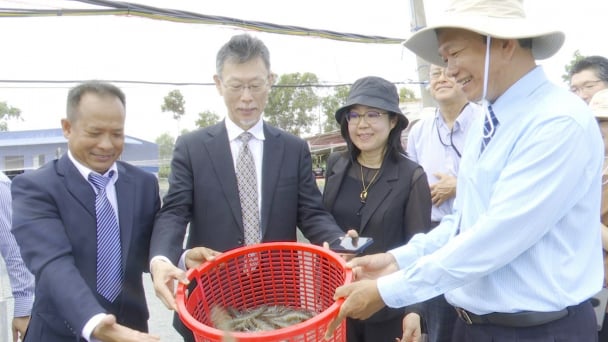
(VAN) In Tien Giang, a high-tech shrimp farm has developed a distinctive energy-saving farming model that has yielded promising results.
![Turning wind and rain into action: [3] 300.000 farmers benefit from agro-climatic bulletins](https://t.ex-cdn.com/nongnghiepmoitruong.vn/608w/files/news/2025/06/12/e5a48259d6a262fc3bb3-nongnghiep-125122.jpg)
(VAN) The agro-climatic bulletin has become a valuable tool for farmers in the Mekong Delta. After more than five years of implementation, the initiative is gradually being expanded nationwide.
![Turning wind and rain into action: [2] Providing forecasts to the people](https://t.ex-cdn.com/nongnghiepmoitruong.vn/608w/files/news/2025/06/12/e5a48259d6a262fc3bb3-nongnghiep-103927.jpg)
(VAN) In addition to improving the quality of hydrometeorological forecasts, putting forecast bulletins into practical use is crucial for production and disaster prevention.
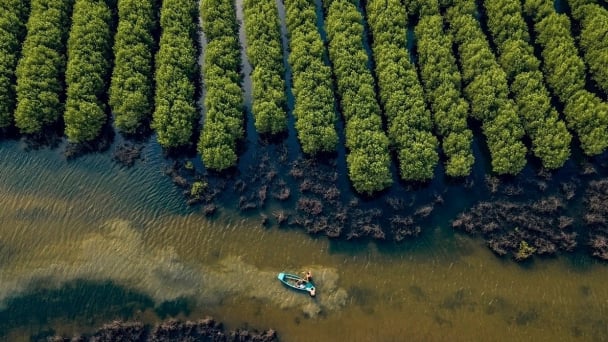
(VAN) Blue carbon is receiving attention for its rapid absorption capacity and vast potential. It represents a promising nature-based solution to respond to climate change.
/2025/06/11/3507-1-161904_583.jpg)
(VAN) Seagrass beds and coral reefs serve as 'cradles' that nurture life in the ocean depths, creating rich aquatic resources in Vietnamese waters.
![Turning wind and rain into action: [1] Forecasting for farmers](https://t.ex-cdn.com/nongnghiepmoitruong.vn/608w/files/news/2025/06/11/e5a48259d6a262fc3bb3-nongnghiep-111919.jpg)
(VAN) Weather is no longer just a matter of fate. Forecasts have now become an essential companion for farmers in every crop season.
/2025/06/10/2501-3-082025_983.jpg)
(VAN) Mr. Le Hoang Minh, Head of Vinamilk's Net Zero project, recently shared insights on the integration of production, energy, and technology in Vinamilk’s green transition journey.